Yuchen Fang
STRAP: Spatio-Temporal Pattern Retrieval for Out-of-Distribution Generalization
May 26, 2025Abstract:Spatio-Temporal Graph Neural Networks (STGNNs) have emerged as a powerful tool for modeling dynamic graph-structured data across diverse domains. However, they often fail to generalize in Spatio-Temporal Out-of-Distribution (STOOD) scenarios, where both temporal dynamics and spatial structures evolve beyond the training distribution. To address this problem, we propose an innovative Spatio-Temporal Retrieval-Augmented Pattern Learning framework,STRAP, which enhances model generalization by integrating retrieval-augmented learning into the STGNN continue learning pipeline. The core of STRAP is a compact and expressive pattern library that stores representative spatio-temporal patterns enriched with historical, structural, and semantic information, which is obtained and optimized during the training phase. During inference, STRAP retrieves relevant patterns from this library based on similarity to the current input and injects them into the model via a plug-and-play prompting mechanism. This not only strengthens spatio-temporal representations but also mitigates catastrophic forgetting. Moreover, STRAP introduces a knowledge-balancing objective to harmonize new information with retrieved knowledge. Extensive experiments across multiple real-world streaming graph datasets show that STRAP consistently outperforms state-of-the-art STGNN baselines on STOOD tasks, demonstrating its robustness, adaptability, and strong generalization capability without task-specific fine-tuning.
High Probability Complexity Bounds of Trust-Region Stochastic Sequential Quadratic Programming with Heavy-Tailed Noise
Mar 24, 2025Abstract:In this paper, we consider nonlinear optimization problems with a stochastic objective and deterministic equality constraints. We propose a Trust-Region Stochastic Sequential Quadratic Programming (TR-SSQP) method and establish its high-probability iteration complexity bounds for identifying first- and second-order $\epsilon$-stationary points. In our algorithm, we assume that exact objective values, gradients, and Hessians are not directly accessible but can be estimated via zeroth-, first-, and second-order probabilistic oracles. Compared to existing complexity studies of SSQP methods that rely on a zeroth-order oracle with sub-exponential tail noise (i.e., light-tailed) and focus mostly on first-order stationarity, our analysis accommodates irreducible and heavy-tailed noise in the zeroth-order oracle and significantly extends the analysis to second-order stationarity. We show that under weaker noise conditions, our method achieves the same high-probability first-order iteration complexity bounds, while also exhibiting promising second-order iteration complexity bounds. Specifically, the method identifies a first-order $\epsilon$-stationary point in $\mathcal{O}(\epsilon^{-2})$ iterations and a second-order $\epsilon$-stationary point in $\mathcal{O}(\epsilon^{-3})$ iterations with high probability, provided that $\epsilon$ is lower bounded by a constant determined by the irreducible noise level in estimation. We validate our theoretical findings and evaluate the practical performance of our method on CUTEst benchmark test set.
Efficient Large-Scale Traffic Forecasting with Transformers: A Spatial Data Management Perspective
Dec 13, 2024Abstract:Road traffic forecasting is crucial in real-world intelligent transportation scenarios like traffic dispatching and path planning in city management and personal traveling. Spatio-temporal graph neural networks (STGNNs) stand out as the mainstream solution in this task. Nevertheless, the quadratic complexity of remarkable dynamic spatial modeling-based STGNNs has become the bottleneck over large-scale traffic data. From the spatial data management perspective, we present a novel Transformer framework called PatchSTG to efficiently and dynamically model spatial dependencies for large-scale traffic forecasting with interpretability and fidelity. Specifically, we design a novel irregular spatial patching to reduce the number of points involved in the dynamic calculation of Transformer. The irregular spatial patching first utilizes the leaf K-dimensional tree (KDTree) to recursively partition irregularly distributed traffic points into leaf nodes with a small capacity, and then merges leaf nodes belonging to the same subtree into occupancy-equaled and non-overlapped patches through padding and backtracking. Based on the patched data, depth and breadth attention are used interchangeably in the encoder to dynamically learn local and global spatial knowledge from points in a patch and points with the same index of patches. Experimental results on four real world large-scale traffic datasets show that our PatchSTG achieves train speed and memory utilization improvements up to $10\times$ and $4\times$ with the state-of-the-art performance.
RAGraph: A General Retrieval-Augmented Graph Learning Framework
Oct 31, 2024



Abstract:Graph Neural Networks (GNNs) have become essential in interpreting relational data across various domains, yet, they often struggle to generalize to unseen graph data that differs markedly from training instances. In this paper, we introduce a novel framework called General Retrieval-Augmented Graph Learning (RAGraph), which brings external graph data into the general graph foundation model to improve model generalization on unseen scenarios. On the top of our framework is a toy graph vector library that we established, which captures key attributes, such as features and task-specific label information. During inference, the RAGraph adeptly retrieves similar toy graphs based on key similarities in downstream tasks, integrating the retrieved data to enrich the learning context via the message-passing prompting mechanism. Our extensive experimental evaluations demonstrate that RAGraph significantly outperforms state-of-the-art graph learning methods in multiple tasks such as node classification, link prediction, and graph classification across both dynamic and static datasets. Furthermore, extensive testing confirms that RAGraph consistently maintains high performance without the need for task-specific fine-tuning, highlighting its adaptability, robustness, and broad applicability.
TC-RAG:Turing-Complete RAG's Case study on Medical LLM Systems
Aug 17, 2024



Abstract:In the pursuit of enhancing domain-specific Large Language Models (LLMs), Retrieval-Augmented Generation (RAG) emerges as a promising solution to mitigate issues such as hallucinations, outdated knowledge, and limited expertise in highly specialized queries. However, existing approaches to RAG fall short by neglecting system state variables, which are crucial for ensuring adaptive control, retrieval halting, and system convergence. In this paper, we introduce the TC-RAG through rigorous proof, a novel framework that addresses these challenges by incorporating a Turing Complete System to manage state variables, thereby enabling more efficient and accurate knowledge retrieval. By leveraging a memory stack system with adaptive retrieval, reasoning, and planning capabilities, TC-RAG not only ensures the controlled halting of retrieval processes but also mitigates the accumulation of erroneous knowledge via Push and Pop actions. In the case study of the medical domain, our extensive experiments on real-world healthcare datasets demonstrate the superiority of TC-RAG over existing methods in accuracy by over 7.20\%. Our dataset and code have been available at https://https://github.com/Artessay/SAMA.git.
ContiFormer: Continuous-Time Transformer for Irregular Time Series Modeling
Feb 16, 2024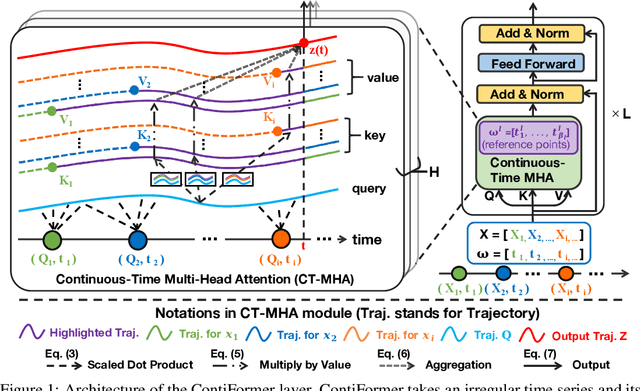

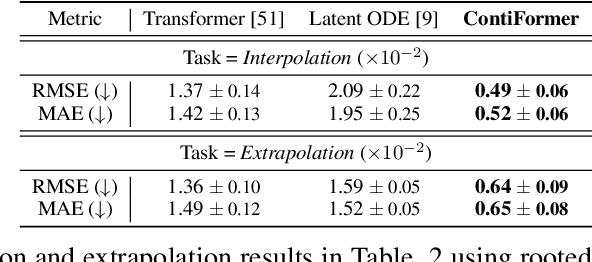

Abstract:Modeling continuous-time dynamics on irregular time series is critical to account for data evolution and correlations that occur continuously. Traditional methods including recurrent neural networks or Transformer models leverage inductive bias via powerful neural architectures to capture complex patterns. However, due to their discrete characteristic, they have limitations in generalizing to continuous-time data paradigms. Though neural ordinary differential equations (Neural ODEs) and their variants have shown promising results in dealing with irregular time series, they often fail to capture the intricate correlations within these sequences. It is challenging yet demanding to concurrently model the relationship between input data points and capture the dynamic changes of the continuous-time system. To tackle this problem, we propose ContiFormer that extends the relation modeling of vanilla Transformer to the continuous-time domain, which explicitly incorporates the modeling abilities of continuous dynamics of Neural ODEs with the attention mechanism of Transformers. We mathematically characterize the expressive power of ContiFormer and illustrate that, by curated designs of function hypothesis, many Transformer variants specialized in irregular time series modeling can be covered as a special case of ContiFormer. A wide range of experiments on both synthetic and real-world datasets have illustrated the superior modeling capacities and prediction performance of ContiFormer on irregular time series data. The project link is https://seqml.github.io/contiformer/.
Timeseries Suppliers Allocation Risk Optimization via Deep Black Litterman Model
Jan 30, 2024



Abstract:We introduce the BL model and the Perspective Matrix to optimize supplier selection and order allocation, focusing on both temporal and spatial dynamics. Our development of a Supplier Relationship Network, using a Spatio-Temporal Graph Neural Network, enhances the understanding of complex supplier interdependencies. Additionally, we address credibility issues in zero-order scenarios with a Masked Ranking Mechanism, improving supplier ranking efficiency. Our model demonstrates superior results on two datasets compared to the traditional models. Our evaluations using real-world datasets highlight DBLM's superiority in providing accurate predictions and precise confidence intervals, particularly in high-resolution scenarios.
Infinite-Horizon Graph Filters: Leveraging Power Series to Enhance Sparse Information Aggregation
Jan 23, 2024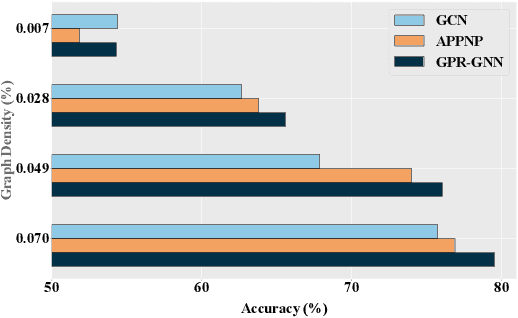
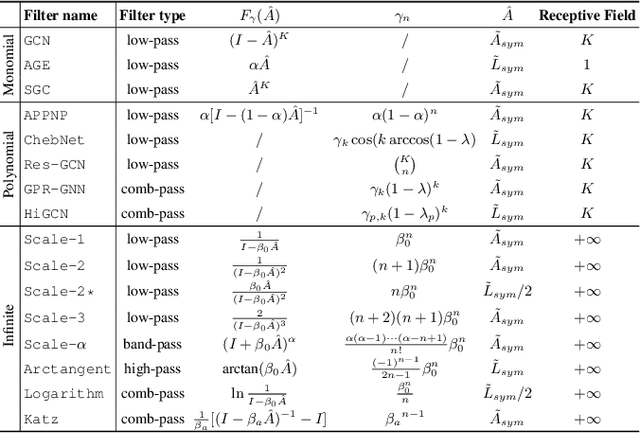
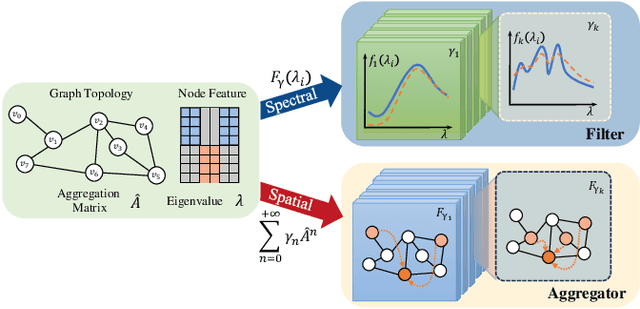

Abstract:Graph Neural Networks (GNNs) have shown considerable effectiveness in a variety of graph learning tasks, particularly those based on the message-passing approach in recent years. However, their performance is often constrained by a limited receptive field, a challenge that becomes more acute in the presence of sparse graphs. In light of the power series, which possesses infinite expansion capabilities, we propose a novel Graph Power Filter Neural Network (GPFN) that enhances node classification by employing a power series graph filter to augment the receptive field. Concretely, our GPFN designs a new way to build a graph filter with an infinite receptive field based on the convergence power series, which can be analyzed in the spectral and spatial domains. Besides, we theoretically prove that our GPFN is a general framework that can integrate any power series and capture long-range dependencies. Finally, experimental results on three datasets demonstrate the superiority of our GPFN over state-of-the-art baselines.
CodeApex: A Bilingual Programming Evaluation Benchmark for Large Language Models
Sep 10, 2023



Abstract:With the emergence of Large Language Models (LLMs), there has been a significant improvement in the programming capabilities of models, attracting growing attention from researchers. We propose CodeApex, a bilingual benchmark dataset focusing on the programming comprehension and code generation abilities of LLMs. CodeApex comprises three types of multiple-choice questions: conceptual understanding, commonsense reasoning, and multi-hop reasoning, designed to evaluate LLMs on programming comprehension tasks. Additionally, CodeApex utilizes algorithmic questions and corresponding test cases to assess the code quality generated by LLMs. We evaluate 14 state-of-the-art LLMs, including both general-purpose and specialized models. GPT exhibits the best programming capabilities, achieving approximate accuracies of 50% and 56% on the two tasks, respectively. There is still significant room for improvement in programming tasks. We hope that CodeApex can serve as a reference for evaluating the coding capabilities of LLMs, further promoting their development and growth. Datasets are released at https://github.com/APEXLAB/CodeApex.git. CodeApex submission website is https://apex.sjtu.edu.cn/codeapex/.
HUTFormer: Hierarchical U-Net Transformer for Long-Term Traffic Forecasting
Jul 27, 2023Abstract:Traffic forecasting, which aims to predict traffic conditions based on historical observations, has been an enduring research topic and is widely recognized as an essential component of intelligent transportation. Recent proposals on Spatial-Temporal Graph Neural Networks (STGNNs) have made significant progress by combining sequential models with graph convolution networks. However, due to high complexity issues, STGNNs only focus on short-term traffic forecasting, e.g., 1-hour forecasting, while ignoring more practical long-term forecasting. In this paper, we make the first attempt to explore long-term traffic forecasting, e.g., 1-day forecasting. To this end, we first reveal its unique challenges in exploiting multi-scale representations. Then, we propose a novel Hierarchical U-net TransFormer (HUTFormer) to address the issues of long-term traffic forecasting. HUTFormer consists of a hierarchical encoder and decoder to jointly generate and utilize multi-scale representations of traffic data. Specifically, for the encoder, we propose window self-attention and segment merging to extract multi-scale representations from long-term traffic data. For the decoder, we design a cross-scale attention mechanism to effectively incorporate multi-scale representations. In addition, HUTFormer employs an efficient input embedding strategy to address the complexity issues. Extensive experiments on four traffic datasets show that the proposed HUTFormer significantly outperforms state-of-the-art traffic forecasting and long time series forecasting baselines.
 Add to Chrome
Add to Chrome Add to Firefox
Add to Firefox Add to Edge
Add to Edge